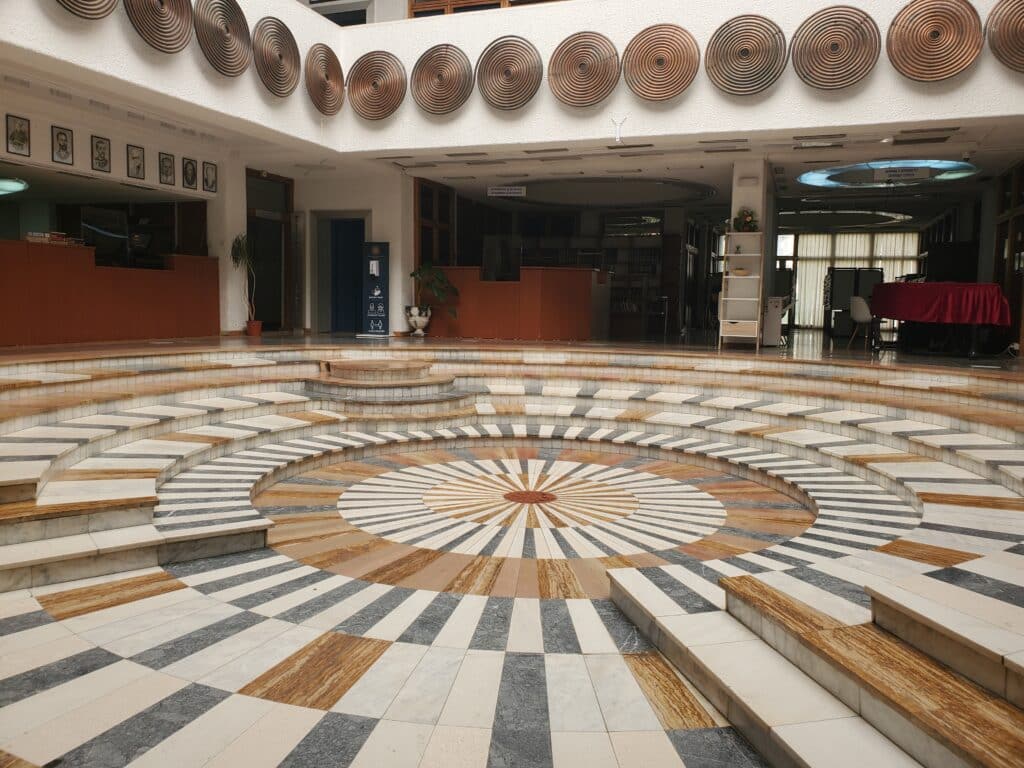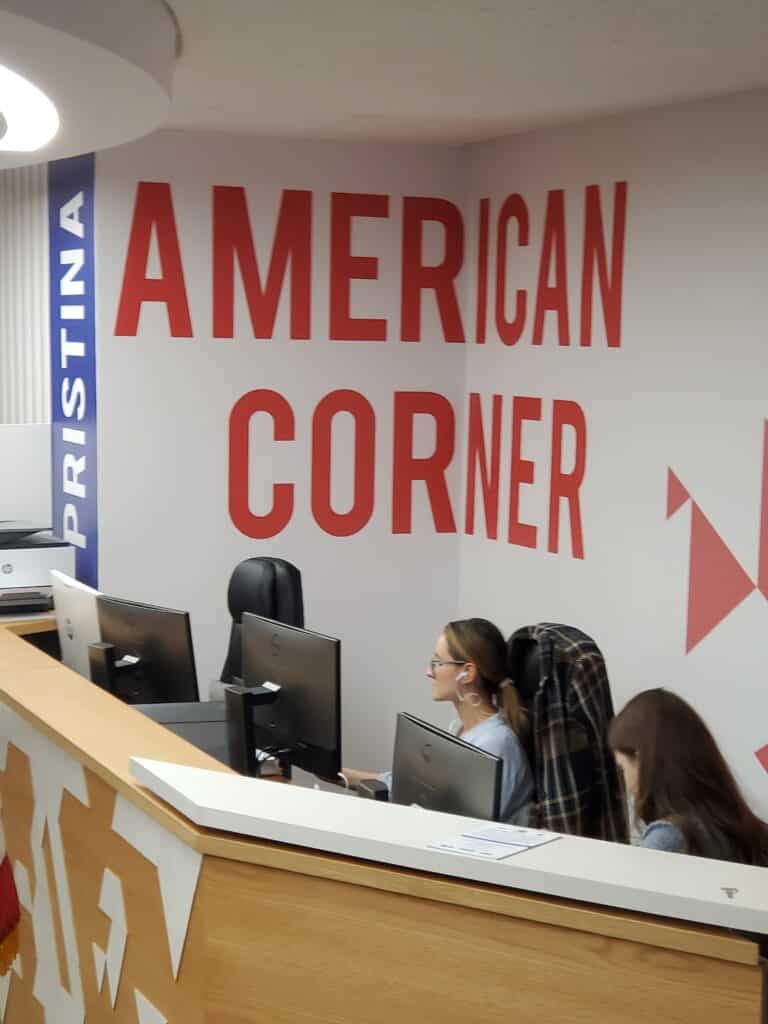Judging a Library by its Cover

As the old saying goes, judging a book by its cover leads to all sorts of ill-advised judgments and wrongheaded conclusions. So, my warning today is to not judge this library by its cover. This is the National Library of Kosovo. It taught me something about perspective and freedom and the thirst for knowledge.
The building was inaugurated in November 1982 and is located in Pristina, Kosovo. It was designed by Croatian architect Andrija Mutnjaković, who incorporated ninety-nine domes into this structure. Some believe those domes represent the traditional Albanian hat called a “plisi.” Others believe them to be an architectural nod to Turkish baths in Prizren (Kosovo) and Patriarchate of Pec (Serbia), thereby attempting a kind of architectural reconciliation of tensions that existed at the time between the two countries.
As I approached this building, I was unsure what to think. Its imposing size and unusual design was not particularly inviting, but my curiosity got the better of me. If architecture is art, then interpretation is acceptable. I interpreted the metal cage covering as a statement of protection of the knowledge held inside. A decent interpretation given the immense treasure of local history contained here, dating back to the 14th and 15th centuries. But actually, the metal overlay, as I learned later, is a reference to Kosovo jewelry-making craft called filigree, an elaborate and intricate silver-making art. The cluster of cubes and domes is intended to reflect the local architecture of mosques and Byzantine designs but with a modern flare.
Libraries have long been a symbol of intellectual freedom. But when a society is in conflict, libraries and the books they contain often bear the brunt of one side’s desire to control history, language, and thought. Book bans and library closings are the result, exposing the oppressor’s fear of new ideas, freedom of expression, and a full exploration of history. The Serbian army is said to have occupied this library during the NATO intervention in 1999, and local Albanian-speaking citizens were prevented from entering. In the decade prior, students were prohibited from learning in their mother tongue of Albanian, and thousands of books of historical and cultural significance were sent to the pulp mill to be destroyed.

Once inside the building, I marveled at the flood of light and warmth provided by those unique white domes—a kind of physical nod to the idea of enlightenment coming from knowledge. The entrance area features a circular mosaic and locally inspired Illyrian spiral designs. It has a community gathering feel, and the stair-stepped rosetta design implies a kind of amphitheater shape. The complexity of the mosaic seems to mimic the mind, swirling with ideas and information and then coming together to exchange those ideas.
Then I saw “The American Corner,” a project by the US Embassy to connect the people of Kosovo with American writers and concepts. “American Corner Pristina exemplifies the U.S. commitment to a core tenet of democracy: a citizen’s right to free access to information” reads its website. It is a small but mighty corner of the library that might be inspiring a future leader or writer or activist right now.

The guide who greeted us here gave a quick but enthusiastic tour of the space, explaining that the American Corner and the library itself are beloved by the nearby university students, veterans of the war, and the community itself. It is a place of learning and exchanging of ideas in a protected environment.
I was wrong about my judgment of the exterior of this library. Like so many things in life, the real beauty is on the inside.



I’m so glad you wrote about this! It was both of ours first time experiencing it and it really was so beautiful inside! And, I had no idea the American Corner would have such a prominent space. I thought we’d have to go search for it! It was so cool to see the pictures of all those American authors on the wall. We didn’t even get to see the whole space and the little we did see was beautiful and unexpected. Thank you for writing about this and sharing the history!
Yes! It does look like it could either be under construction or remodeling or perhaps a gulag!! It’s good to know that you went inside to discover the truth. Thank for sharing your library visit. Did you join?
How do you get all this information!!!! 🤦♀️. You never cease to amaze me!! How does your brain have that much space??
This was a great tribute to that library!❤️